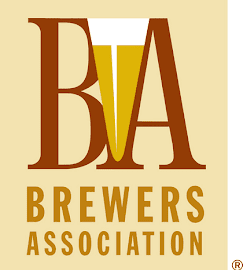In this supermarket, cases of hard seltzer dominate the floor of its refrigerated beer aisle. In just a few years, seltzer has come to dominate beer and 'craft' business to a significant extent.
***************
And so it has come to this.
- Hard seltzer is taking the US by storm. Sales of the canned fizzy beverages from brands like Whiteclaw, Truly, and Bon & Viv have boomed over the last year. The category, currently worth $550 million, could grow to reach $2.5 billion by 2021, said Sean King, an analyst at UBS. That implies an annual growth rate of 66% and a jump in consumption from 14 million cases in 2018 to 72 million cases in 2021.— Markets Insider (30 July 2019)
- Hard seltzer is what it sounds like, a seltzer spiked with alcohol. At their most basic, hard seltzers have three ingredients: carbonated water, alcohol, and flavoring. Many brands infuse their seltzers with alcohol from fermented cane sugar. Some also use malted barley, like the throwback spiked seltzer-like beverage, Zima, which was created in 1993 by Coors. As non-alcoholic seltzer has risen in sales year after year, hard seltzer has skyrocketed in tandem. By 2021, some analysts predict hard seltzer could be a $2.5 billion industry. It’s experienced market growth of 200% so far this year alone.— Wine Enthusiast (20 September 2019)
- Hard seltzers have positioned themselves at the nexus of convenience and health. These carbonated water-based ready-to-drink [RTD] cocktails, which are made either from malted barley or fermented sugar, typically clock in at 100 calories or less per serving, compared with heavier beers, wines, or cocktails that have from 100 to 400 calories per serving. They’re low in alcohol as well, ranging from 4.5% to 6% ABV. They’re also gluten-free [...] besides offering the convenience of a shatterproof portable can. [...] Pricing varies, but hard seltzers are usually cheaper than craft beer and definitely less expensive than a mid-range bottle of wine or spirits.— SevenFifty Daily (12 April 2019)
- Typical of the bunch is Truly Hard Seltzer in blueberry and açaí flavor, which comes in 12-ounce slim cans, each with 100 calories, 5% alcohol, and two grams of carbs—gluten-free, of course. Truly is made by Boston Beer, whose name belies its recent focus. Beer, including Samuel Adams, makes up just under one-third of estimated company volumes. The rest comes from hard cider, tea, and seltzer. Boston is No. 2 in hard seltzer, with 26% of the market, behind privately held Mark Anthony Brands and its White Claw line, with 59%.— Barron's (12 February 2020)
- Sales of hard seltzer have now exceeded $585 million for the 52-week period that ended on March 23, 2019, according to Nielsen. This represents approximately 1.4 percent of the total beer/flavored malt beverage/cider market. In dollar sales, the category grew 185 percent, compared to a year ago, while unit sales grew 196 percent. While seltzer continues to grow its market share aggressively across Nielsen’s measured off-premise outlets, other segments of the market are flattening. During the 52-week period that ended on February 23, 2019, beer/flavored malt beverage/cider sales grew 0.9 percent, according to Nielsen, while wine sales expanded 2.4 percent and spirits sales increased 3.8 percent in the same period.— SevenFifty Daily (12 April 2019)
As Alan McLeod (of A Better Blog) commented (not so) tongue-in-cheek:
The BA [U.S. Beer Association] just needs to adjust the definition of craft beer to solve this.
-----more-----
- This post originally appeared on YFGF's Facebook page.
- For more from YFGF:
- Follow on Twitter: @Cizauskas.
- Like on Facebook: YoursForGoodFermentables.
- Follow on Flickr: Cizauskas.
- Follow on Instagram: @tcizauskas.













No comments:
Post a Comment
Comment here ...